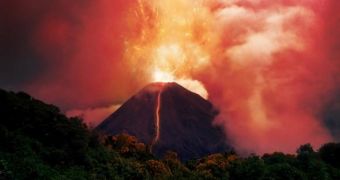Researchers claim to have finally solved the mystery surrounding a major volcanic eruption that took place several hundred years ago, i.e. in 1257 A.D.
In a recent paper in the journal Proceedings of the National Academy of Sciences, specialists say that, according to evidence at hand, Indonesia's Samalas volcano is the one to blame for this massive eruption.
Researchers estimate that, when this volcano erupted back in the 13th century, some 40 cubic kilometers (10 cubic miles) of rock and ash worked their way into the environment.
What's more, it appears that fine plume reached heights of at least 40 kilometers (25 miles).
By the looks of it, the eruption was so great that it left its chemical signature in ice blocks in both the Arctic and the Antarctic, Times of India tells us.
The eruption also fostered significant chances in terms of weather. Thus, the summer that followed it was surprisingly cold and brought about heavy rainfall, European medieval texts say.

 14 DAY TRIAL //
14 DAY TRIAL //